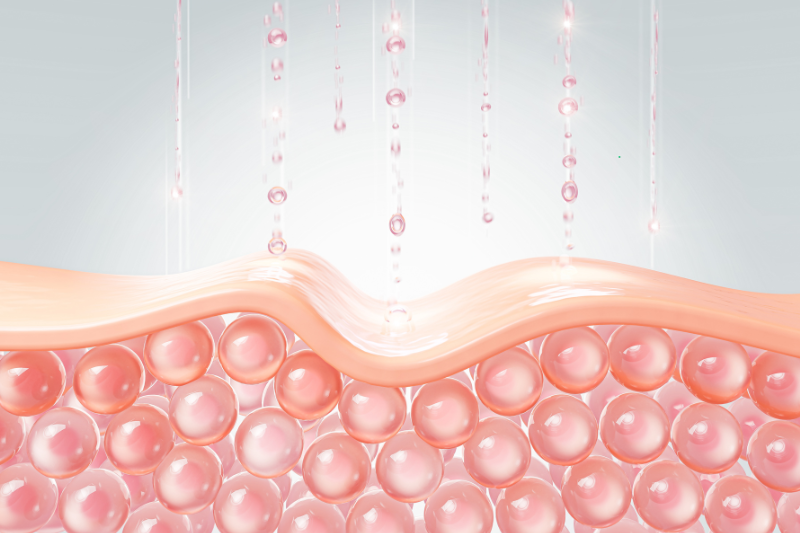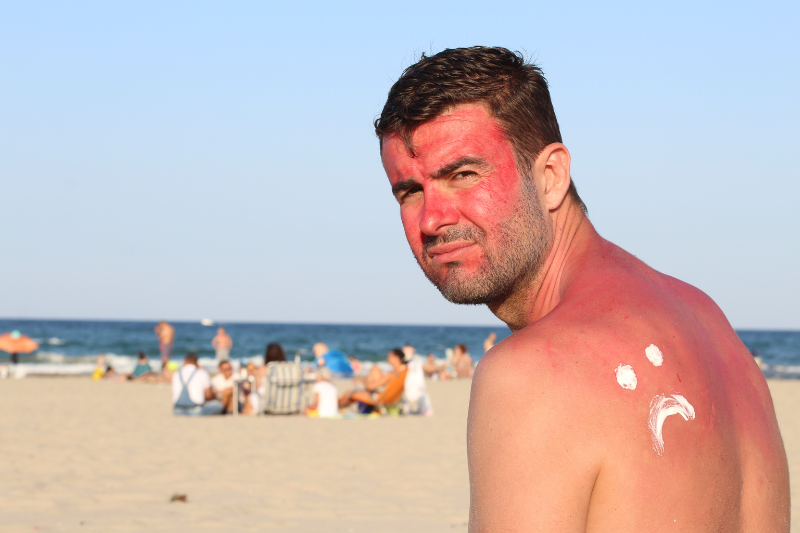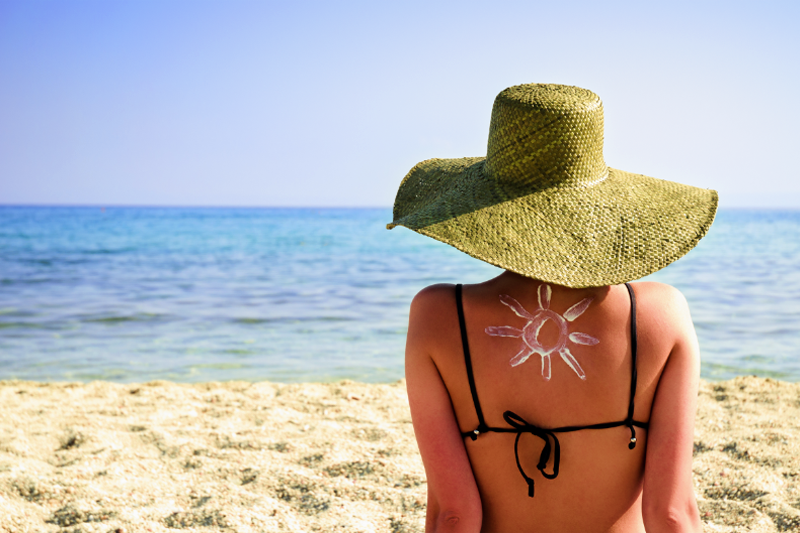UVR and Your Skin

Skin Structure
The outer layer of skin, the epidermis, is made up largely of flat cells called squamous cells. These cells contain a substance called keratin, which resists heat and cold and the effects of many chemicals.
Lower down in the epidermis are rounder cells called basal cells and scattered among these lie the melanocytes, the cells which produce melanin, the pigment that gives skin its colour. Melanin protects the body against the damaging ultraviolet rays present in sunlight by absorbing these rays. Most Australians don’t make enough melanin to protect against the harmful effects of our very strong ultraviolet radiation. Below the epidermis is the dermis, which contains the roots of hairs, glands which make sweat and oil, blood and lymph vessels, and nerves. Moles and freckles are both areas of skin where there is a lot of melanin. Freckles are flat and they gradually darken in sunlight and tend to fade in winter. Moles can be flat or raised, and they remain constant in colour.

What Happens To Skin in the Sun?
Ultraviolet radiation, (UVR), from the sun causes changes to take place both in the structure and function of skin cells. Over many years of exposure to sunlight, the skin becomes permanently damaged, and the damage will continue to worsen as long as the skin keeps getting more sun exposure.
The changes are often described as ‘permanent aging’, but they are different from normal aging skin. In old age, the parts of the skin which are not exposed to the sun are smooth, without spots or blemishes. Though a little thinner than younger skin, there are relatively few wrinkles, and this skin remains fairly firm.
Skin which has been exposed to the sun becomes thickened, rough and leathery. Over 20 to 40 years skin acquires many blotches, blemishes and brown “age” spots. It loses its elasticity and becomes loose and wrinkled. These effects are seen especially on the skin which gets most sun – the face, the back of the neck, the back of hands and arms, and the “V” neckline.
Most importantly, however, the sun’s ultraviolet rays may cause skin cancer to develop. This happens as a result of damage to cellular DNA and suppression of the skin immune system.
What Is Ultraviolet Radiation?
The sun gives off many different kinds of radiation. Most people are familiar with the visible light spectrum or sunlight, with colours ranging from violet to red. UVR is similar to light only with shorter wavelengths. UVR cannot be seen by the human eye or felt on the skin. It is more powerful and hazardous than visible light. The diagram below shows the position of ultraviolet radiation within what is called the electromagnetic spectrum
There are three main types of ultraviolet radiation, however only two actually reach the earth’s surface. These are UVA and UVB. UVB is the most damaging of the two and is responsible for sunburn, suntan, skin ageing, skin cancers (such as BCCs, SCC s and melanoma) and eye damage. UVA, although less harmful is still dangerous. UVA may be a cause of skin damage and contributes to the premature ageing of the skin and eye damage. The amount of UVR varies through the year and through the day. The higher the level of UVR in sunlight, the more damaging it is. The heat in the sun comes from the infrared rays of the electromagnetic spectrum. Although this results in warmth, it is not responsible for sunburn.

What Affects the Amount of UVR?
Height of the sun in the sky
The amount of ultraviolet radiation is greatest when the sun is directly overhead. At this time the UVR travels through less atmosphere and is therefore stronger. When the sun is lower in the sky more UVR is absorbed and scattered in the atmosphere. The height of the sun in the sky is affected by:
1. The time of the year
During each year as the earth moves around the sun, the earth will be at different distances from the sun. This affects the UVR levels. The sunshine in the south of WA delivers over six times the amount of UVR in January as it does in July. The highest-risk months are usually November, December, January and February. UVR remains high year round at and near the equator. However there can still be considerable differences from day to day. For instance a high-UVR day in October or April can still be more damaging than a rainy January day when much more of the UVR is blocked by heavy cloud.
2. The time of the day
The amount of UVR varies throughout the day. On a cloud-free day, the maximum UVR level occurs when the sun is overhead, at solar noon (in Perth solar noon falls between 12 noon and 1pm). The maximum temperature however often occurs later in the day. Temperature does not effect the amount of UVR. You can still burn on days that are cool. The danger period for UVR is from 10am to 3pm. These are the hours when you will burn fastest. Remember though that you can still burn outside these hours – it just takes longer.
3. Scattered and reflected UVR
UVR can be reflected back from some surfaces, like rain bouncing back from the pavement. This can increase the amount of UVR reaching your skin. Fresh snow reflects by far the greatest amount of UVR. Sand, surf, white paint, light coloured concrete, grass, and to a lesser extent still water and some soil, also reflect a significant amount of UVR. This can reach your face even under a hat.
You can still burn on a day of thin cloud. The cloud scatters the UVR rays in all directions and although you receive less direct UVR, you may receive more indirectly. Heavy cloud does offer protection. It can decrease the amount of UVR by 90% or more, but scattered cloud has little or no effect on UVR levels.
4. Altitude
Solar UVR increases by around 4% with every 300m above sea level. Therefore higher altitudes will receive more UVR than lower altitudes.
5. Ozone depletion
Ozone is a gas which is part of the earth’s upper atmosphere. It plays a vital role in the absorption of UVR. The amount of ozone in the atmosphere varies according to geographic location and season.
In the mid 1980s concern over the ozone layer led to the discovery that there had been ozone thinning over Antarctica. This thinning is often referred to as the ozone hole. The thinning varies with the seasons but it is most noticeable during spring when the amount of ozone drops rapidly. Antarctic air with depleted ozone mixes with the rest of the southern hemisphere air resulting in lower than normal levels of ozone over the southern half of Australia. This ozone depleted air leads to small increases in the amount of UVB reaching the earth’s surface. Daily variations in stratospheric ozone (not caused by ozone depletion) have a much larger impact on UVB levels than ozone depletion.
